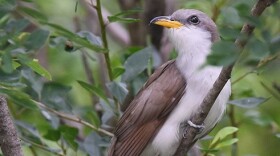On October 14, a wide swath of the western U.S. will experience a solar eclipse. At its peak, the path of the eclipse will cross right through the Four Corners region of the Colorado Plateau.
This is an annular solar eclipse—where the Moon comes between Earth and Sun, mostly blotting out the Sun but leaving a bright outer circle of light—the famed “ring of fire.”
As the sky darkens in midmorning, interesting events will transpire in nature. For some animals it appears to be dusk, and they respond as if night was falling. Bats may briefly take flight, and crickets can chirp.
A community science program invites members of the public to help document these changes. The Eclipse Soundscapes Project, funded by NASA Science Activation, asks individuals, educators, scientists, and others to report what they observe—using not just eyes, but ears and all their senses.
Participants can assume several roles in the Soundscapes project. Apprentices and observers can submit what they experience. Data collectors can make audio recordings and turn in the files.
The project aims to involve a wide range of people during this exciting celestial occurrence. The effort will be repeated during the total solar eclipse next April that will cover more of the country.
So, while watching the eclipse with special protective glasses, listen closely too. Crickets may chirp, birds may stop singing, the air itself may change.
More information is available at www.EclipseSoundscapes.org
This Earth Note was written by Rose Houk and produced by KNAU and the Sustainable Communities Program at Northern Arizona University.
Correction: An earlier version of this story misstated the source of funding as NOAA. It has been corrected to NASA Science Activation.




![Photograph of a Havasupai Indian woman, Yunosi, carrying a "Kathak" or basket on her back, ca.1900. She is wrapped in a brightly patterned blanket or cloth under which she wears a patterned dress. A strap around her forehead supports the large conical basket hanging on her back. She is standing in profile facing her right in front of a crude dwelling constructed from sticks and foliage. A gourd[?] and blankets are at her feet. A blanket with a zig-zag pattern hangs, bunched up, from the side of the structure.](https://npr.brightspotcdn.com/dims4/default/066c070/2147483647/strip/true/crop/3930x2190+0+214/resize/280x156!/quality/90/?url=http%3A%2F%2Fnpr-brightspot.s3.amazonaws.com%2Fac%2Ffb%2F7e79765b4e26ab77c24cc621a116%2Fhavasupai-indian-woman-yunosi-carrying-a-kathak-or-basket-on-her-back-ca.1900_%28CHS-3354%29.jpg)


